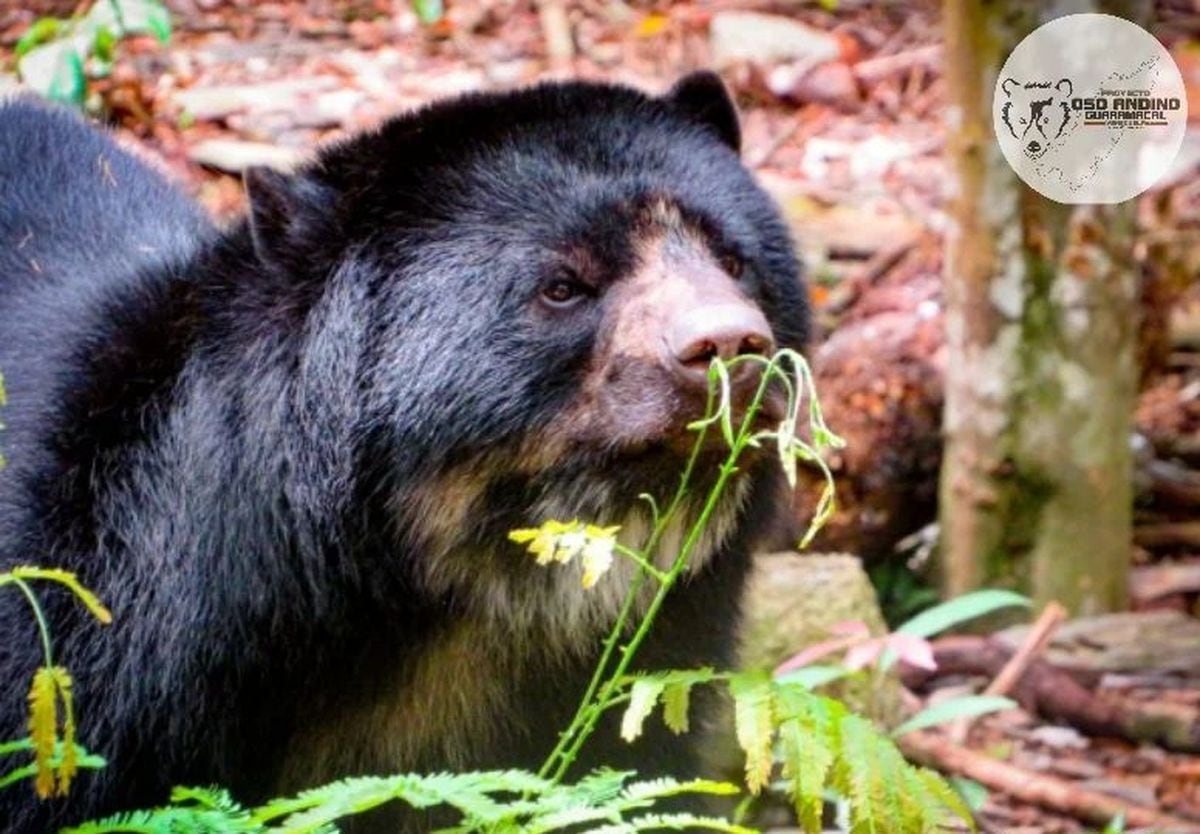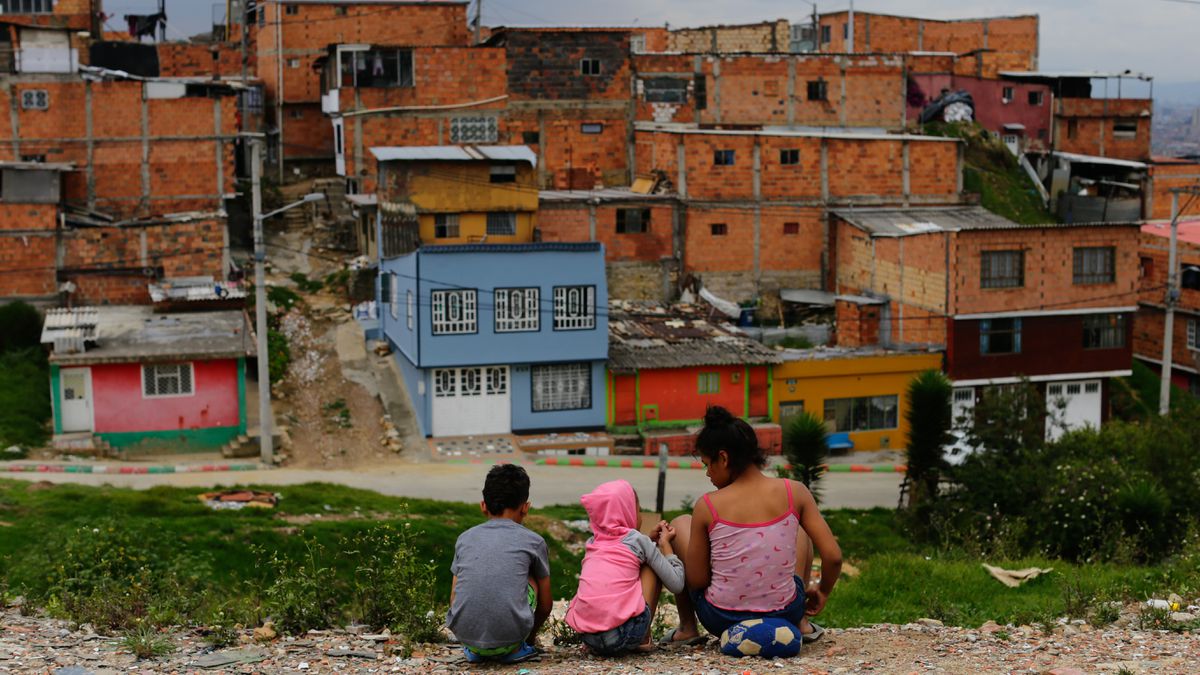EL PAÍS offers the section América Futura open for its daily and global informative contribution on sustainable development.
If you want to support our journalism, subscribe
here
.
Marcos Hidalgo has come face to face with a spectacled bear only once in his life.
It was 2018 and on a fieldwork route in Guaramacal, Venezuela, he came across a not very large one, a juvenile individual, defying what, he says, is a maxim of those who study this species: "He who is looking for a bear is not find a bear,” he says by phone from the Venezuelan Andes.
That one time he was paralyzed to the point that he couldn't even take out his phone to take a picture, so he dedicated himself to keeping the memory in his memory.
By that time, the agricultural production engineer on loan to the conservancy had been tracking the spectacled bear for a couple of years.
The Guaramacal Andean Bear Project that he carries out is today the only systematic study in the country that gathers information on this species that is not seen much,
Hidalgo proudly says that he accumulates more than 15,000 entries in the database that collects the tracks of this Andean bear or, by its first name,
Tremarctos ornatus
.
With his work, he has been able to make an inventory of what they eat: a 75% vegetable and 25% animal diet, which includes fruits, bromeliads, palms, vertebrate eggs and honey, like all bears.
He also has clues about its behavior in this tropical cloud forest.
“The presence of bears is conditioned by the rainy season.
Between November and April they come out into the open wasteland and sightings can occur.
Between April and August the sighting of pups usually happens.
But there is another more important achievement that is part of this effort that Hidalgo embodies: that the Venezuelan State decreed in 2021 the José Gregorio Hernández National Park, in the extensive Ramal de Calderas, of about 50 thousand hectares, between the states of Trujillo, Mérida and Barinas, which ensures a good piece of habitat for the preservation of the species.
Members of the Guaramacal Andean Bear project, in the Guaramacal National Park, in May 2022. Guaramacal Andean Bear Project
Tracking a mammal of this size—they can measure from 1 to 2.2 meters tall and weigh between 60 and 170 kilos—is not easy.
In Venezuela, the approximation that existed until now was through interviews with peasants, theoretical estimates and very few documented sightings.
In 2018, Hidalgo incorporated the first camera traps into the study that allow bears to be identified, whose white spot on their faces constitutes a unique footprint.
With them, he has managed to register some 34 individuals in some 23 covered hectares, of which about five are cubs born between 2021 and 2022, just at that time hinge in which those forests became a national park, births that are good news.
“El Ramal de Calderas is a key area for conservation in the tropical Andes of South America.
camera freaks
The biologist Edgar Yerena is one of the pioneers in the studies of this species and who since the 90s was promoting the creation of the national park, whose foundation was recently authorized by the Venezuelan Government.
He has also been Hidalgo's mentor.
“The most viable form of conservation is to place all the spaces where the bear lives under protection, because it prevents deforestation and the agricultural frontier from advancing.
Another counterpart of this conservation is that these are the most productive hydrographic basins in the Andes, there is a large flow of usable water in Santo Domingo, Boconó and Masparro.
Those of us who think about bears think that protecting it is a good measure, but it is in the best interest of all of us, not just bears.”
These mammals require a large space to live.
The new park adds one more piece to a huge ecological puzzle that serves as a corridor.
"The only way to ensure that the bears do not disappear is to guarantee a system of protected areas for the Andes, to reconnect that puzzle of which several pieces are still missing, but the Calderas Branch was an important asset," adds the biologist.
A specimen of Andean bear, captured by a hidden camera in a forest in Venezuela. Guaramacal Andean Bear Project
Yerena, also a professor at the Simón Bolívar University, highlights that one of the values of the research and conservation project carried out by Hidalgo is that the young man lives in the area he is studying, so monitoring is much more viable for him. than for other researchers in a country with suffocated universities and no budget to travel to do field work.
"Bears are flexible in their ecological adaptations, these data allow us to know more about their particular behavior in Venezuela, which is not the same as in subtropical countries, such as Bolivia, where it also lives and where we have more information."
Not only that.
Local guides, some of whom have become rangers at the new park, are part of Hidalgo's research team, whom he has trained to identify traces of bear feeders and manipulate camera traps.
There are a total of ten men who every three months go on an expedition to cover up to 30 kilometers of mountains in one day following the bear tracks.
“We have a sampling design that establishes a survey of the teams every 90 days and it is almost 100% effective: where we put a camera, a bear passes by and the bears are fans of moving the cameras, some of us have gotten them very far from where they were. we have installed”, says Hidalgo.
The videos that he has posted on his social networks also show his fondness for standing in front of them,
sniff them and withdraw with some disinterest in their passionate science.
The captured images are not just a scientific document.
They also let rural communities in the state of Trujillo know that the bear they believed to be extinct had not completely disappeared.
challenge at the border
Hidalgo started with 10 cameras that he obtained through an Idea Wild scholarship, then he grew to 30 stations and now has more than 50. It is a job that he has tackled alone, seeking sponsoring companies that range from manufacturers of sausages to mountaineering boots.
It also appeals to the solidarity of those who want to provide an Amazon
gift card
to buy more cameras in the list of equipment that they have on the project's Instagram profile.
“We need more cameras and opt for international financing, because all this work is basically pro bono.
I am a university professor in Venezuela who barely earns 28 dollars a month”.
The spectacled bear is distributed in Colombia, Ecuador, Peru and Bolivia, the latter two countries where it is estimated to have the largest populations.
For Yerena, Venezuela, with fewer individuals, faces the most difficult challenges for its conservation.
One of them is in the Sierra de Perijá, one of the largest continuous forested areas, but over which a border passes.
In this area of indigenous peoples, the spectacled bear has its own name in other languages: it is
called mashiramo
in Yukpa,
masirsa
in japrería,
sabaidaku
in barí,
koju
or
jez
in wayuunaiki.
But the language is not a bridge to overcome for its conservation.
“On the Colombian side there are very few bears, since the entire slope of the Sierra has been razed.
On the Venezuelan side it is better protected because there is a national park, it rains more and it is the largest continuous forested area that we have, but it is like an island that contains bears.
It is inaccessible.
That is a bulwark that we must protect with an agreement with Colombia to be able to manage that population in the most effective way.”
Beyond the binational agreements for which we will have to wait, Hidalgo has already begun a relationship around sustainable development with the inhabitants of some communities of the Ramal del Calderas.
In addition to incorporating them into research and education on this species, it is promoting agroforestry with coffee as a model to improve the quality of life of the Las Negritas community, located between the national parks, which serves as a livelihood for the inhabitants and also for house for the spectacled bear.








